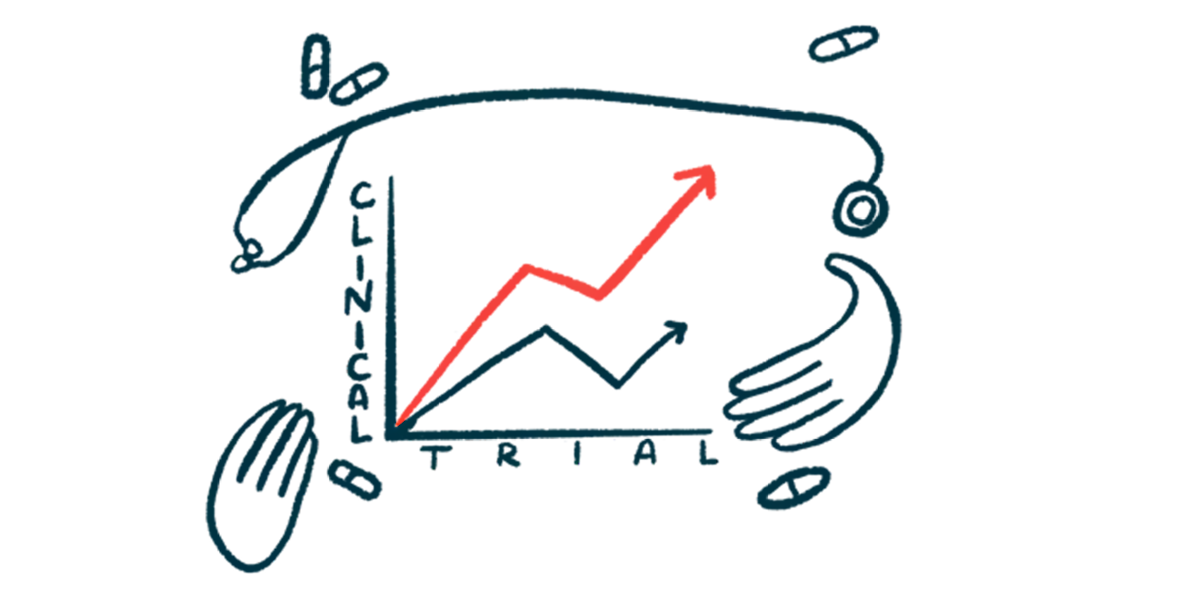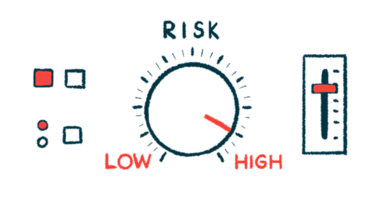MGFA Session 2025: Gefurulimab eases symptoms in gMG trial
Phase 3 study shows early, sustained disease control with weekly treatment

Weekly treatment with gefurulimab —an investigational C5 inhibitor from Alexion, Astrazeneca Rare Disease, that’s designed to be self-administered — led to early and sustained reductions in disease severity for adults with generalized myasthenia gravis (gMG), according to top-line data from a Phase 3 clinical trial.
The findings — showing the Phase 3 PREVAIL trial (NCT05556096) met all of its primary and secondary endpoints — were shared by Kelly Gwathmey, MD, principal investigator of the study at Virginia Commonwealth University.
Gwathmey’s oral presentation, “Efficacy and Safety of Subcutaneous Self-administered Gefurulimab in Generalized Myasthenia Gravis: Topline Results From a Phase 3, Randomized, Double-Blind, Placebo-Controlled Study (PREVAIL),” took place during the Myasthenia Gravis Foundation of America (MGFA) scientific session at the American Association of Neuromuscular & Electrodiagnostic Medicine (AANEM) annual meeting, held Oct. 29 in San Francisco.
“At this year’s MGFA Scientific Session, we are proud to reinforce our pioneering leadership in C5 inhibition with topline data from the PREVAIL Phase III trial supporting the potential for gefurulimab to deliver early and sustained disease control to patients with gMG,” Christophe Hotermans, MD, PhD, senior vice president, head of global medical affairs for Alexion, said in a company press release.
How gefurulimab works to block the immune attack in gMG
People with gMG experience symptoms of muscle weakness and fatigue because their immune system mistakenly damages the neuromuscular junction (NMJ) — the point where nerve and muscle cells meet to coordinate movement.
These attacks are mediated by self-reactive antibodies that bind to NMJ proteins, usually acetylcholine receptors (AChRs). This triggers a damaging reaction from the immune system’s complement cascade.
Gefurulimab is designed to prevent this harmful complement activity by blocking a protein called C5. This approach has proven effective for treating AChR antibody-positive gMG, an indication for which Alexion already markets two other C5 inhibitors — Ultomiris (ravulizumab-cwvz) and Soliris (eculizumab).
However, these generally require into-the-vein infusions (intravenous,) administered in a healthcare setting. Gefurulimab is given as weekly under-the-skin injections (subcutaneous) that can be self-administered at home, offering a more convenient treatment option.
PREVAIL enrolled 260 adults with gMG who were positive for anti-AChR antibodies and were already on stable standard-of-care therapy. Participants were randomly assigned to self-administer weekly injections of gefurulimab (at a weight-based dose) or a placebo for 26 weeks — about six months.
The study’s main goal was to determine whether gefurulimab was better than a placebo at improving scores on the MG Activities of Daily Living (MG-ADL), a patient-reported measure of disease severity, after 26 weeks.
As previously reported, this goal was met, with gefurulimab showing “an early, sustained, and clinically meaningful treatment effect on MG-ADL total score,” Gwathmey said.
Trial data show meaningful improvements in daily living scores
Specifically, MG-ADL scores at 26 weeks had improved by 4.2 points with gefurulimab and 2.6 points with the placebo — a statistically significant, 1.6-point difference. “Extremely importantly,” Gwathmey said. A clinically meaningful improvement on this scale was observed as early as week 1, after the initial dose, and was sustained through week 26.
The investigational therapy also had a clinically meaningful and statistically significant effect on Quantitative MG (QMG) — a clinician-rated measure of disease severity — after 26 weeks, which was a key secondary endpoint.
QMG scores improved by 1.8 points with gefurulimab relative to the placebo after a month, and this improvement was maintained through six months — reflecting an “early onset and sustained improvement, as measured by the QMG total score,” the scientist explained.
Gefurulimab was generally tolerated and showed a safety profile comparable to the approved C5 inhibitors, according to Gwathmey.
Most side effects were mild or moderate in severity. The most common in the gefurulimab group were injection site reaction, headache, and back pain — which occurred at similar rates in the placebo group.
“Based on these clinical benefits and the advantage of self-administered subcutaneous weekly dosing, gefurulimab may offer patients … a convenient and effective treatment option,” Gwathmey concluded.
After completing the main part of the study, participants entered an open-label extension period, where everyone receives gefurulimab for up to nearly four years. A total of 249 people have joined, and the study is still ongoing.
Note: The Myasthenia Gravis News team is providing virtual coverage of Myasthenia Gravis Foundation of America’s scientific session at the American Association of Neuromuscular & Electrodiagnostic Medicine Annual Meeting Oct. 29. Go here to see the latest stories from the conference.







Leave a comment
Fill in the required fields to post. Your email address will not be published.